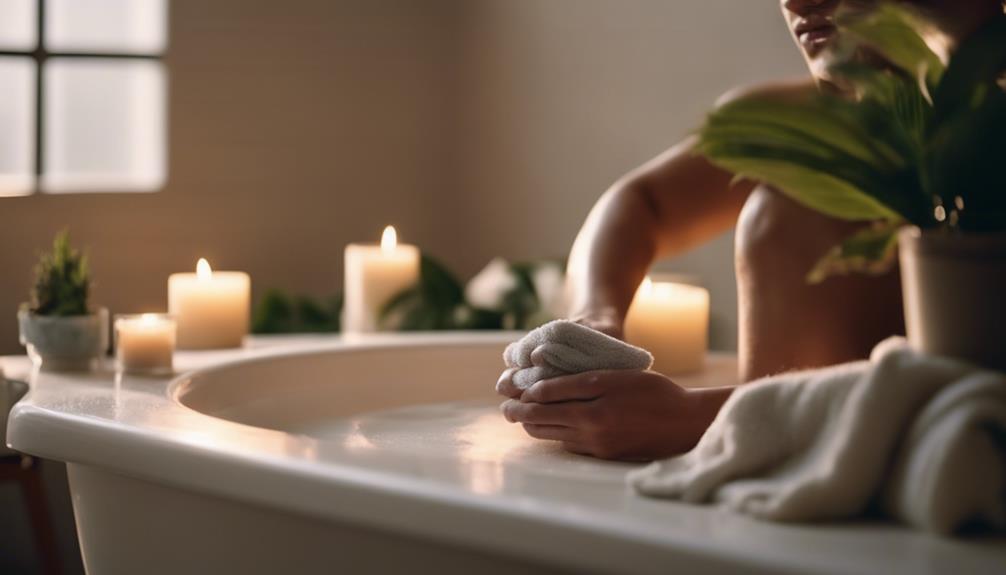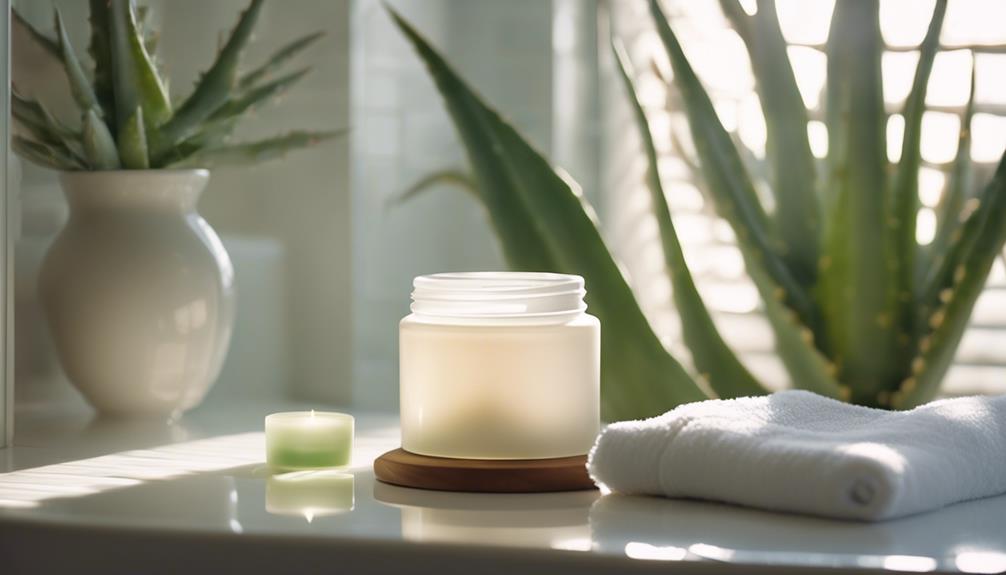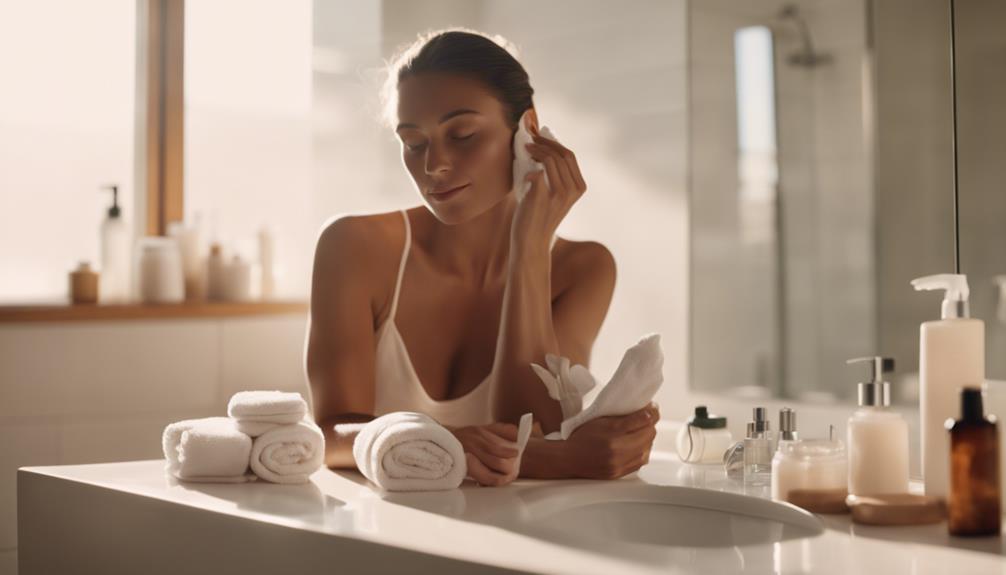Getting your skin ready for tanning is the secret sauce to rocking that golden glow, and it all starts with proper prep. First, exfoliate to remove dead skin—think of it like taking your skin to a spa! Use a loofah or a homemade scrub of coffee grounds, and be sure to focus on those rough spots like your elbows and knees. Next, moisturize with a light, non-oily lotion to keep your skin hydrated and your tan even. Don't forget to apply SPF lip balm too! Trust me, your skin will thank you, and there's more to discover if you stick around!
Key Takeaways
- Exfoliate your skin at least twice a week to remove dead cells and enhance tanning absorption.
- Use a light, non-oil based moisturizer before tanning to ensure even application and prevent streaks.
- Focus on rough areas like elbows and knees during exfoliation for a smoother tan.
- Hydrate by drinking plenty of water to maintain skin health and appearance before tanning.
Importance of Skin Preparation
Preparing your skin is essential because it sets the foundation for a smooth, even tan that lasts longer. Think of it like prepping a canvas before painting; you wouldn't want to start with rough edges, right?
First things first, you gotta exfoliate! It helps get rid of all those pesky dead skin cells, making your skin ready to soak up that tan.
Then, don't forget to moisturize! Hydrated skin looks healthier and allows for an even glow.
And hey, skip those oily lotions; they're like a tan's worst enemy! Ever tried getting a good tan with a slippery surface? It's a no-go!
Effective Exfoliation Techniques

To achieve the best results, incorporate a variety of exfoliation techniques that suit your skin type and preferences. Trust me, your skin will thank you!
Exfoliating helps remove those pesky dead skin cells, making way for a smooth, even tan. Here are some fun ways to get your scrub on:
- Use a loofah or exfoliating mitt for a gentle scrub.
- Try a sugar or salt scrub for a spa-like experience at home.
- Make your own scrub with coffee grounds and coconut oil—who doesn't love coffee?
- Don't forget to focus on rough spots like elbows and knees.
With these tips, you'll be well on your way to a flawless tan.
Best Moisturizing Practices

After exfoliating, your next step is to lock in moisture for healthy, hydrated skin that enhances your tanning results. You don't want to end up looking like a dried-out raisin, right?
So, grab a light, non-oil based moisturizer and slather it on! This helps keep your skin soft and prevents those pesky tan lines. Remember, oil can create a barrier that ruins your tanning efforts, so stick to oil-free products.
Don't forget about your lips, either! A lip balm with SPF will keep them from drying out in the sun.
And hey, consider using a tan extender after your tanning session. It'll help your gorgeous glow last longer! Who doesn't want an awesome tan that sticks around?
Frequently Asked Questions
How Often Should I Exfoliate Before Tanning Sessions?
You should exfoliate your skin 1-2 times a week before tanning sessions. This helps remove dead skin cells, ensuring a smooth surface for an even tan. Focus on rough areas for the best results.
Can I Use Self-Tanner and Tanning Beds Together?
Yes, you can use self-tanner and tanning beds together. Just make certain you apply the self-tanner first, allowing it to develop fully, then use the tanning bed for added color, but avoid overexposure to prevent damage.
What Should I Wear During Tanning Sessions?
During tanning sessions, wear minimal clothing to avoid tan lines, like a bikini or comfortable shorts. Opt for non-restrictive fabrics that won't hinder your tanning process, ensuring an even and natural-looking tan.
Is It Safe to Tan With Acne or Skin Conditions?
Oh sure, why not? Just slap on some tanning oil over that acne! Seriously though, it's best to consult a dermatologist first—your skin deserves better than a sunburned breakout. Safety first, glow later!
How Long Before Tanning Should I Moisturize?
You should moisturize at least an hour before tanning. This gives your skin time to absorb the product, ensuring it stays hydrated and helps achieve a smoother, more even tan without any unwanted patches.
Conclusion
So, there you have it! If you want to rock that sun-kissed glow without looking like a patchy leopard, prep your skin like a pro.
Exfoliate those rough spots, slather on some moisturizer, and pick the right tanning lotion—unless you enjoy walking around with tan lines that scream 'I forgot to blend!'
Remember, your skin deserves a little TLC before it turns into a golden masterpiece.
Now go shine bright like the fabulous human you are!










